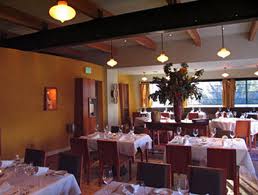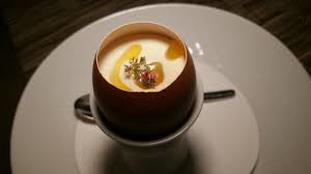When Wayne and I return to California, in addition to visiting family and friends, we make time for dinner at Manresa. This small restaurant in the town of Los Gatos has earned three Michelin stars under the inspired leadership of Chef and founder, David Kinch. Humble yet quietly creative, Kinch is the winner of the James Beard Foundation’s Best Chef in America award, and Manresa was named Best Restaurant in the United States by Forbes magazine.
Los Gatos, where Manresa is hidden away on an alley off the main street, is a pretty Victorian town just south of San Jose and twenty miles from Santa Cruz through the scenic coast range. Named for the mountain lions and bobcats that populated the area when Los Gatos was founded in 1839 as a Spanish land grant, an occasional mountain lion still appears in the mountains and parks surrounding the town. Redwood trees and oaks are also abundant in the area as are a number of exquisite and well preserved Victorian homes. We lived in Los Gatos for forty-two years before retiring and moving to Hawaii, and our son graduated from Los Gatos High School, founded in 1908. Wayne and I have been dining at Manresa, more or less yearly, since the restaurant opened in 2002.
|
|
An olive tree and
Rosemary scent the quiet
Restaurant’s garden.
|

David Kinch was wise to situate his gem of a restaurant in this lovely historic town. First of all, the temperate weather invites visitors in all seasons. Secondly, this Mediterranean climate provides for the farming, fishing and production of a vast selection of exquisite vegetables, fruits, wines, fish, seafood and cheeses within a fifty-mile radius, allowing Kinch to offer true farm to table food, for which the restaurant is justly famous. Also, Los Gatos is home to a host of Silicon Valley millionaires who can afford Manresa’s very steep prices. However, since Manresa earned its third Michelin Star, gourmet food lovers from all over the world are willing to make the journey to a town fifty miles south of San Francisco to experience some of the best food they will ever eat.
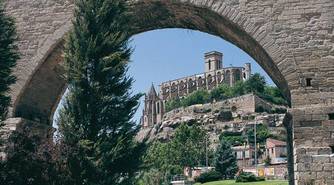
David Kinch has paid his dues and continues to draw on his wide and varied experience and education to keep his cooking fresh and authentic. Educated at Johnson & Wales University in Providence, Rhode Island, he later worked in restaurants in New York, San Francisco, New Orleans, Germany, France, Japan and Spain. The seasonally changing tasting menus at Manresa reflect the culinary influences of these diverse cuisines. Even the restaurant’s name hints at the kind of food that diners can expect. Manresa is the name of both a beach in the hippie surfer town of Santa Cruz where Kinch lives, and a medieval city in Catalonia, where he fell in love with Spanish food. Incidentally, St. Ignatius of Loyola spent a year reading and praying in Manresa in 1522, leading to his Spiritual Exercises, the foundation of Jesuit spirituality. Kinch has been called an intellectual chef, and his food does exhibit a quiet, thoughtful quality.

More recently, the Japanese concept of umami has in a subtle way become evident in Manresa’s menu. Umami is a Japanese word coined in 1908 by professor Kikunae Ikeda of Tokyo Imperial University; roughly translated, umami means “pleasant savory taste.” Professor Ikeda contrasted umami with other pleasant tastes, which could be described as sweet, sour, bitter or salty. By incorporating Japanese-inspired ingredients such as shiitake mushrooms, green tea, dried bonito flakes, fermented fish and kombu dashi (seaweed broth) into some of his preparations, Kinch achieves an astonishing depth and complexity of flavor that exudes umami.
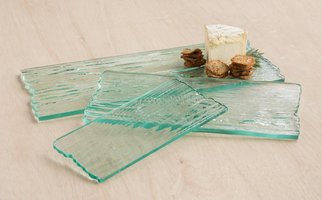
Kinch’s artistic tastes do not apply only to food. He is known to select all of the dishes on which each item in the tasting menu is presented. A Japanese-inspired preparation will be served in a zen-style raku bowl, foods with a hint of traditional French flavor might appear on fine porcelain, and he frequently offers locally inspired dishes on Annieglass, produced in nearby Watsonville by local artisan Annie Morhauser. The restaurant itself is also a quiet work of art. Guests enter through a small Mediterranean-style garden shaded with olive trees, and once inside, the soft earth tones, gentle lighting and minimalist but tasteful décor create a soothing welcome.
This sense of dignified welcome infuses every aspect of the guest’s experience throughout the evening. The staff is impeccably trained, and there is never the slightest whiff of snobbishness or superiority. Every guest is greeted with genuine friendliness, and the service is quiet and efficient. Indeed, the movements of the food servers resemble graceful choreography as the plates and utensils are presented and removed in a silent dance that is never too hurried or too slow. Manresa opens at 5:30 PM, and there is only one seating, though guests do not arrive at the same time, so there is never a sense of crowdedness or too close proximity to the next table.
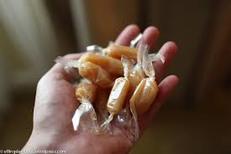
In the early years of Manresa, guests were presented with a menu, from which they could select various items to create a three to five course meal. A tasting menu of several small dishes was also available. Now Manresa offers only a seasonal tasting menu of perhaps thirteen to sixteen small exquisitely prepared dishes. Guests can also order the pre-planned wine pairings or select their own wines or spirits from the bar or with the assistance of the sommelier. At the end of the evening, guests are given a cryptic printed list of the items they ate throughout the meal. And as they leave, they are offered a generous handful of soft home-made caramels, and often a freshly baked muffin for breakfast the next morning.
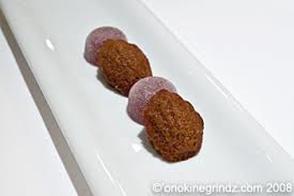
On our recent visit to Manresa, we were served some familiar favorites and several innovative food combinations new to the menu. The first and last items to arrive are described on the post-dinner menu as: Petit fours “red pepper-black olive” and Petit fours “strawberry-chocolate.” These charming savory and sweet petit four bookends have been on the menu for several years and form a comfortable sense of deju vu for returning diners. The enigmatically described black olive and chocolate items are both tiny madeleines, freshly baked and still warm from the oven, with spongey centers and slightly crispy exteriors. The savory black olive madeleines, which arrive at the beginning of the meal, serve as a preview of the slightly sweet chocolate madeleines, that follow dessert. The red pepper and strawberry bites are in fact tiny and very intensely flavored fruit jellies, savory and sweet respectively.
In previous years, David Kinch’s signature amuse bouche was the French-inspired Maple Egg. This stunning starter consisted of a slightly sweet and slightly savory poached egg, served in the shell with a touch of sea salt, sherry vinegar, a sprinkling of fresh minced chives, tiny amounts of ginger, cinnamon and cloves, a drizzle of maple syrup and a dollop of unsweetened whipped cream. The idea was to use the miniature mother-of-pearl spoon provided for the purpose to dig down to the bottom of the egg and retrieve the spoon, laden with a small amount of all of the key ingredients, including, of course, some of the luscious liquid egg yolk. This creation was truly heavenly food. I miss the Maple Egg so much that I found a recipe on line and have make them at home. While they tasted delicious, the technique requires a culinary precision and expertise that I sadly lack, and mine were mere shadows of the glorious Maple Eggs we once enjoyed at Manresa. I provide you with the recipe for the famous “Arpege Egg” at the end of this blog with a stern warning that yours will not be a good as David Kinch’s.
|
|
In the same cup, a
Soft egg yolk, maple syrup
And sea salt mingle.
|
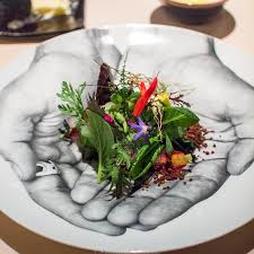
Another old Manresa favorite, which I believe has never left the menu, is Kinch’s brilliant “Into the Vegetable Garden Salad,” complete with edible flowers and even edible “dirt,” composed of a mysterious variety of roots and grains. The contents of this salad are entirely dependent on the baby vegetables, herbs and greens that are at their peak on the day the salad will be served. I have eaten Into the Garden Salads that contained miniscule carrots, turnips, tomatoes, tiny potatoes, and all sorts of interesting herbs, lettuces and flowers, and each composition was uniquely and seasonally delicious.
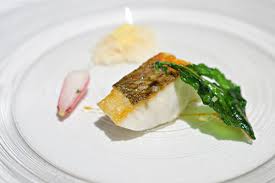
Our recent dinner included a simple but sublime preparation of striped bass with porcini mushrooms, caviar and tiny kernels of corn, freshly cut off the cob. I did not remember ever eating this particular combination at Manresa before, but the depth and delicacy of flavor hiding in the broth in which these freshest of ingredients rested was an experience to be treasured. Wayne felt the same way about the roast aged duck with bitter citrus and endive, another new preparation that was served as one of the fourteen items on the evening’s tasting menu. Innovative and fresh seasonal desserts included yogurt and honey sorbet with sorrel and strawberries with elderflower syrup.
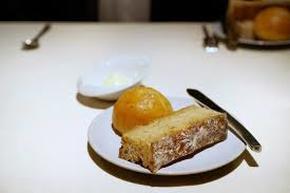
The bakery and pastry staff at Manresa is outstanding, and fresh bread is always served throughout the meal. Usually there are three selections, a traditional sourdough, a dark seeded bread with rye flour and my favorite, buttery miniature brioches. Manresa churns its own butter from cows on a small farm in Watsonville. This aromatic, rich butter is nothing like the butter that most of us purchase in the store, and of course it is always served soft and spreadable at room temperature. Manresa’s breads have gained so many admirers that Kinch has launched Manresa Bread, a bakery that sells all manner of bread, croissants and other pastries near the restaurant (276 North Santa Cruz Avenue, Los Gatos.)
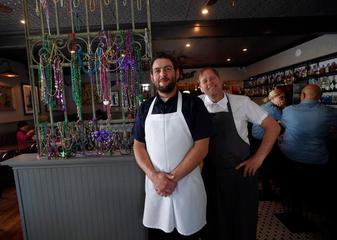
Another of Kinch’s inspirations is The Bywater, a neighborhood bar and eatery, also in Los Gatos (532 North Santa Cruz Avenue,) which he co-founded with Andrew Burnham. This informal eatery offers New Orleans-inspired food and drinks, including fried green tomatoes and po’boy sandwiches. You will recall that Kinch honed his cooking skills in New Orleans early in his career. He checks in at Bywater regularly before heading to Manresa for the dinner service. One of my fondest memories of dinner at Manresa is David Kinch, coming out into the restaurant toward the end of the evening in his food-splattered apron to check with us and the other diners one by one to see what we thought of the meal. His humility and sincerity were heartwarming, and his love for honest, natural and beautiful food was heartfelt and true. If you would like to explore Kinch’s philosophical and aesthetic understanding of food and its relation to the sea and the land and the changing seasons, you can read Manresa: An Edible Reflection, (Ten Speed Press, 2013) which Kinch co-wrote with Christine Muhlke.
Manresa is a special occasion, or perhaps even a once in a lifetime restaurant. It can cost up to a thousand dollars for a couple to enjoy a meal together at Manresa, much more if they order costly wines. The tasting menu is $255 per person, and the additional Beverage Pairing is $198 per person. Expensive as it is, we have always felt that we received good value for our meal, as it was perfect in every way, conceived by one of the greatest chefs who ever lived, and prepared by the best cooks, bakers and pastry chefs you will ever find. Reservations fill up at least three months in advance. If you want to dine at Manresa, 320 Village Lane, Los Gatos, CA, 95030, call (408) 354-4330.
Arpege Farm Egg
David Kinch was inspired by Alain Passard, chef of the three Michelin-starred restaurant L’Arpege in Paris, who elevated this simple poached farm egg into a genuine work of art. While this recipe cannot give you a world-class chef’s sensitivity to aesthetic detail and the nuances of taste, texture, temperature, technique and presentation, it will help you make an astonishingly tasty poached egg, actually six poached eggs, to share with your friends and loved ones. You will need a metal egg rack and a special tool to cut off the tops of the egg shells. We found ours at Williams Sonoma.
- 6 tablespoons heavy cream
- 1 teaspoon sherry vinegar
- a sprinkle of sea salt (to taste)
- 6 large eggs at room temperature
- 3 teaspoons fresh chives, finely minced
- Pinches of:
- black pepper, freshly ground
- ground clove
- ground cinnamon
- ground ginger
- 3 teaspoons pure maple syrup
Special equipment: small bowl, medium sized mixing bowl, whip or hand-held electric mixer, rubber spatula, tablespoon, kitchen knife, measuring spoons, large shallow cooking pot, metal egg rack, tool for cutting egg shells, 6 egg cups, kitchen towel or paper towels, teaspoon, 6 small plates and miniature spoons for serving.
Servings: 6 as a small appetizer
- Chill the mixing bowl, whip or beaters in the freezer until they are very cold. Whip the cream until soft peaks form. Fold in one teaspoon of sherry vinegar gently with a rubber spatula. Place the eggs in a metal egg rack. Use an egg shell cutting tool to remove the top, or tapered end of each egg. Carefully pour the egg white out of each shell into a small bowl, holding the yolk back with the top of the shell or a tablespoon. Save the egg whites for another use. Replace the shells with the egg yolks into the rack.
- Sprinkle small pinches of each of the four spices and the minced chives onto each egg yolk. Bring about an inch of water to a simmer in a large shallow pan. Place the eggs in the rack into the simmering water just until the yolks start to set around the edges, about 3 minutes.
- Remove the egg shells from the water, dry them carefully, and place them in egg cups. Spoon the whipped cream mixture over the yolks, just up to the rim of the shell. Drizzle each egg with approximately ½ teaspoon of maple syrup. To serve, place each egg cup on a small serving plate with a miniature spoon.
